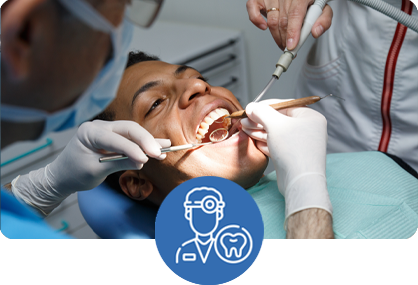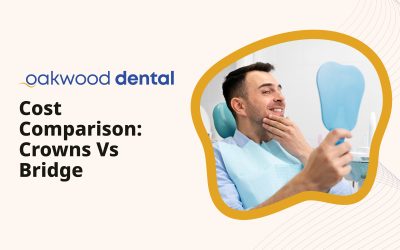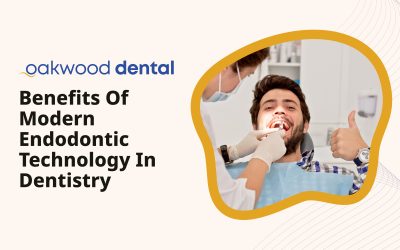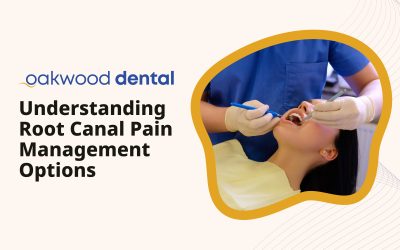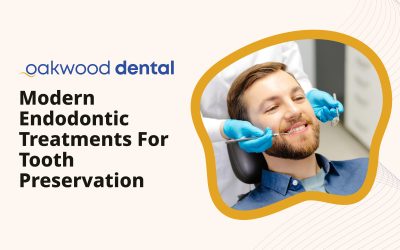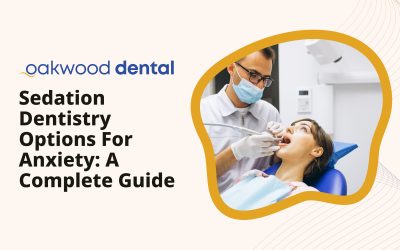Key Takeaways
- Full mouth implants provide a permanent solution for replacing multiple or all missing teeth
- They preserve jawbone density and facial structure, preventing bone collapse
- Implants offer improved ability to eat, speak, and smile with confidence
- The treatment integrates titanium posts into the jawbone for superior stability
- Modern techniques like All-on-4 allow for faster restoration and recovery
- Proper aftercare ensures the long-term success of dental implants
- Implant-supported restorations can restore up to 90% of natural chewing function
- The psychological benefits include improved self-confidence and social interaction
- Unlike traditional dentures, implants prevent jawbone deterioration and facial collapse
- Though initially more expensive, implants often prove more cost-effective long-term
Full mouth implants represent a revolutionary approach to addressing severe tooth loss. Unlike traditional dentures that sit on top of the gums, dental implants are titanium posts surgically placed into the jawbone that function like natural tooth roots. For people missing most or all of their teeth, full mouth implant restoration offers a permanent, stable solution that can dramatically improve quality of life. At Oakwood Dental Clinics, we’ve seen firsthand how this treatment transforms patients’ lives by restoring both function and confidence.
Understanding Full Mouth Implant Restoration
Full mouth implant restoration addresses poor gum and teeth health by replacing damaged or missing teeth with implant-supported prosthetics. This procedure is designed for patients who have lost multiple teeth or suffer from severe dental issues that conventional treatments cannot adequately address. The process involves strategically placing dental implants throughout the jaw to support a full arch of prosthetic teeth, effectively creating a new dental foundation that integrates with your natural bone structure. Each implant acts as an artificial tooth root, providing the necessary stability and stimulation to maintain jawbone health and density over time.
Our full mouth implant restoration services utilize the latest techniques and products, including All-on-4 and All-on-X systems. These innovative approaches allow us to provide patients with a functional, beautiful smile in as little as one day, significantly reducing the traditional waiting period associated with dental implants. The All-on-4 technique specifically enables us to support an entire arch of teeth with just four strategically placed implants, making the treatment more accessible for patients with moderate bone loss who might otherwise require extensive bone grafting procedures.
The foundation of successful implant restoration begins with a comprehensive evaluation of your oral health. Our specialists assess your bone structure, gum health, and overall dental condition to develop a personalized treatment plan tailored to your specific needs and goals. This detailed assessment typically includes advanced 3D imaging that allows for precise planning of implant placement, ensuring optimal results while minimizing risks. The evaluation also considers factors such as bite alignment, facial aesthetics, and functional requirements to create a restoration that not only looks natural but also performs exceptionally well for everyday activities like eating and speaking.
Preserving Bone Structure and Facial Appearance
One of the most significant advantages of full mouth implants is their ability to preserve jawbone density and facial structure. When teeth are lost, the jawbone begins to deteriorate due to lack of stimulation, leading to a collapsed facial appearance and premature aging. This bone resorption process can begin almost immediately after tooth loss and may continue progressively for years, eventually resulting in significant changes to facial contours and proportions that can add decades to your appearance.
Dental implants function as artificial tooth roots, providing the necessary stimulation to maintain bone health. By replacing the tooth root, dental implants effectively preserve the bone structure and prevent the collapse that typically occurs with tooth loss. This preservation of bone density is crucial for maintaining a youthful facial appearance and preventing the sunken look often associated with long-term denture use. Clinical studies have demonstrated that patients with dental implants retain significantly more jawbone volume over time compared to those using traditional removable prosthetics, with some research showing up to 75% less bone loss in the first year following tooth extraction when implants are placed promptly.
The titanium posts used in dental implants integrate directly with your jawbone through a process called osseointegration. This natural bonding creates a stable foundation for your replacement teeth while simultaneously stimulating bone growth and preservation. Unlike traditional dentures that sit on top of the gums, implants become a part of your anatomy, providing superior stability and preventing bone resorption. The biocompatible nature of titanium allows it to fuse with living bone tissue, creating a permanent connection that mimics the relationship between natural tooth roots and the jawbone. This biological integration is what makes dental implants the gold standard for tooth replacement, offering benefits that no other restorative option can provide.
Regular dental care and checkups remain essential even after receiving dental implants. Maintaining good oral hygiene and attending scheduled appointments will ensure the longevity of your implants and the continued health of your jawbone and surrounding tissues. While implants themselves cannot develop cavities, the surrounding gum tissue requires diligent care to prevent peri-implantitis—an inflammatory condition similar to periodontal disease that can compromise implant stability if left untreated. Professional cleanings using specialized instruments designed for implant maintenance, combined with proper home care techniques, help protect your investment and maintain optimal oral health for years to come.
Enhanced Functionality and Comfort
Full mouth implants significantly improve daily functions that many take for granted, such as eating, speaking, and smiling with confidence. Unlike removable dentures, implant-supported restorations stay securely in place, eliminating concerns about slippage or discomfort during meals or conversations. This stability comes from the direct connection between the prosthetic teeth and the jawbone through the titanium implants, creating a unified system that functions much like natural teeth. Patients frequently report that after adapting to their implant restorations, they forget they even have replacement teeth—a testament to the natural feel and seamless integration that implants provide.
With full mouth implants, patients regain nearly 100% of their natural biting and chewing capacity. This restoration of function allows you to enjoy a diverse diet without restrictions, contributing to better nutrition and overall health. The stability provided by implants ensures that you can bite into apples, corn on the cob, and other challenging foods with confidence—something that traditional denture wearers often struggle with. Research has shown that implant patients can generate bite forces comparable to those with natural teeth, approximately 200-250 pounds per square inch, compared to the mere 50 pounds of force typically possible with conventional dentures. This dramatic improvement in chewing efficiency directly impacts digestive health and nutritional absorption, as food can be properly broken down before swallowing.
Proper nutrition is essential during the recovery period after implant surgery. Soft, nutrient-rich foods help promote healing while avoiding unnecessary pressure on the surgical sites. As healing progresses, you can gradually reintroduce more foods into your diet, eventually enjoying the full range of dietary options that implants make possible. During the initial healing phase, protein-rich foods like yogurt, smoothies, and well-cooked eggs provide essential nutrients that support tissue regeneration and immune function, while cold foods like ice cream and chilled soups can help reduce inflammation and provide comfort.
Essential aftercare practices include gentle brushing around the implant sites, using prescribed antimicrobial mouth rinses, and avoiding smoking or using straws during the initial healing phase. Following these guidelines helps ensure successful osseointegration and the long-term success of your dental implants. Maintaining proper oral hygiene becomes particularly important as the gum tissue heals around the implant components. Special soft-bristled brushes designed for implant care, along with non-abrasive, antimicrobial cleansers, help protect the healing tissues while preventing bacterial accumulation that could compromise osseointegration or lead to post-surgical complications.
Longevity and Durability of Full Mouth Implants
One of the most compelling advantages of full mouth implants is their exceptional longevity. With proper care and maintenance, dental implants can last for decades—potentially even a lifetime—making them a cost-effective solution in the long run despite their higher initial investment. Clinical studies tracking implant success rates over extended periods have shown survival rates exceeding 95% at 10 years and continuing with high success rates beyond 20 years. This remarkable durability stands in stark contrast to traditional bridges and dentures, which typically require replacement every 5-10 years due to wear, damage, or changes in oral structures.
The materials used in dental implants contribute significantly to their durability. The titanium posts are biocompatible and resistant to corrosion, allowing them to integrate successfully with the jawbone without deterioration over time. The prosthetic teeth attached to the implants are typically made from high-quality ceramic materials that resist staining and wear, maintaining their natural appearance for years. Modern zirconia and lithium disilicate ceramics used in implant restorations offer exceptional strength—up to 1200 MPa for zirconia—while providing optical properties that mimic natural tooth enamel. These advanced materials resist chipping, fracturing, and wear far better than the acrylic typically used in conventional dentures, contributing to the long-term aesthetic and functional success of implant restorations.
The All-on-4 dental implant technique represents a significant advancement in implant technology, allowing for full-arch restoration with just four strategically placed implants. This approach reduces surgical complexity and recovery time while providing excellent stability and function. The technique utilizes the available bone more efficiently by placing the posterior implants at an angle, avoiding critical anatomical structures like the maxillary sinuses or mental foramina while achieving greater implant-to-bone contact. This innovative approach has made implant treatment accessible to many patients who were previously considered poor candidates due to bone loss, often eliminating the need for extensive bone grafting procedures.
Various types of dental implants are available to address different clinical situations. From traditional endosteal implants to specialized zygomatic implants for patients with significant bone loss, modern implant dentistry offers solutions for even the most challenging cases. Endosteal implants, placed directly in the jawbone, remain the most common type, while subperiosteal implants sit on top of the bone but under the gum tissue for patients with insufficient bone height. For cases of extreme maxillary bone loss, zygomatic implants anchor in the dense zygomatic (cheekbone) structure, providing stability without extensive grafting. This diversity of implant designs ensures that nearly every patient can benefit from implant technology, regardless of their specific anatomical limitations.
Psychological and Social Benefits
The psychological impact of tooth loss extends far beyond physical discomfort. Many patients with missing teeth experience decreased self-confidence, social anxiety, and even depression. Full mouth implants address these issues by restoring not just function but also aesthetics, allowing patients to smile, speak, and interact with others without self-consciousness. Research in psychological journals has documented significant improvements in quality of life measures following implant treatment, with patients reporting enhanced social interaction, improved romantic relationships, and greater career opportunities after receiving their restorations.
The natural appearance of implant-supported restorations contributes significantly to their psychological benefits. Unlike older denture options that may look artificial, modern implant prosthetics are custom-designed to match your natural teeth in color, shape, and alignment. This personalized approach ensures that your new smile looks authentic, boosting your confidence in social and professional settings. Advanced digital smile design protocols allow prosthodontists to create highly individualized restorations that complement facial features, skin tone, and even personality traits. The translucency, surface texture, and color gradations of modern ceramic materials can be manipulated to create restorations that are virtually indistinguishable from natural teeth, even under close inspection.
For seniors, dental implants offer particular advantages beyond aesthetics. The improved chewing ability supports better nutrition, while the preservation of jawbone helps maintain facial structure and prevent the aged appearance that often accompanies tooth loss. These benefits contribute to an enhanced quality of life and continued social engagement during the golden years. Nutritional studies have shown that seniors with implant-supported restorations consume more fruits, vegetables, and protein-rich foods compared to those with conventional dentures, potentially contributing to better overall health outcomes and reduced risk of conditions associated with malnutrition in older adults.
Full Mouth Restoration Strategies
Full mouth restoration involves comprehensive treatment planning to address all aspects of oral health, from functional concerns to aesthetic goals. At Oakwood Dental Clinics, we utilize various strategies to achieve optimal results for each patient’s unique situation. This multidisciplinary approach often combines implant placement with additional procedures such as bone augmentation, soft tissue management, and occlusal (bite) adjustment to ensure not only beautiful aesthetics but also long-term functional success. The planning process typically involves collaboration between surgical specialists, restorative dentists, and laboratory technicians to coordinate all aspects of treatment for predictable outcomes.
The All-on-4 technique represents one of the most innovative approaches to full mouth restoration. This method uses just four strategically placed implants to support an entire arch of teeth, reducing surgical complexity and recovery time. The implants are positioned to maximize contact with available bone, often eliminating the need for bone grafting procedures even in cases of moderate bone loss. The posterior implants are placed at a 45-degree angle, allowing for longer implants that achieve greater bone engagement while avoiding anatomical structures like the maxillary sinuses or mandibular nerve. This angulation also creates a wider implant distribution pattern, improving prosthetic support and reducing cantilever forces that could compromise long-term success.
Full mouth restoration strategies may include a combination of treatments beyond implants, such as bone grafting, sinus lifts, or gum recontouring, depending on the patient’s specific needs. This comprehensive approach ensures that all aspects of oral health are addressed for optimal long-term results. For patients with significant bone loss, techniques like ridge augmentation using particulate bone materials or titanium mesh containment systems can rebuild adequate volume for implant placement. In the upper jaw, sinus lift procedures can create additional bone height by carefully elevating the sinus membrane and placing graft material in the created space. These preparatory procedures, while adding treatment time, significantly expand the pool of patients who can benefit from implant therapy.
Recovery and Aftercare for Implant Success
Proper recovery and aftercare are essential components of successful implant treatment. Following your procedure, adhering to recommended care guidelines helps ensure optimal healing and long-term implant stability. Understanding the biological processes involved in osseointegration and tissue healing allows patients to actively participate in their recovery, maximizing the chances of treatment success and minimizing potential complications that could compromise outcomes.
The initial healing phase typically lasts 1-2 weeks, during which you may experience some swelling, bruising, and discomfort. These symptoms are normal and can be managed with prescribed medications and cold compresses. During this period, it’s important to follow a soft food diet and avoid putting pressure on the implant sites. Swelling usually peaks around 48-72 hours after surgery before gradually subsiding. Applying cold packs for 20-minute intervals during the first 24 hours helps constrict blood vessels and limit inflammatory response. After this initial period, warm compresses can promote circulation and accelerate healing. Prescribed analgesics and anti-inflammatory medications should be taken as directed to manage discomfort and reduce inflammation that could impair healing.
Essential aftercare practices include gentle oral hygiene around the surgical sites, using prescribed antimicrobial rinses, and avoiding tobacco products, which can significantly impair healing. It’s also important to attend all scheduled follow-up appointments so your dentist can monitor your healing progress and address any concerns promptly. During the early healing phase, specially formulated chlorhexidine rinses help control bacterial populations around the surgical sites without mechanical disruption of the healing tissues. As healing progresses, soft-bristled brushes and specialized implant cleaning tools like interdental brushes and water flossers become important for maintaining optimal hygiene around the implant components.
Comparing Full Mouth Implants to Traditional Dentures
When considering tooth replacement options, understanding the differences between full mouth implants and traditional dentures helps patients make informed decisions about their oral health care. These distinct approaches to tooth replacement offer dramatically different experiences in terms of stability, comfort, maintenance requirements, and long-term outcomes. While both can restore appearance, their functional capabilities and impact on quality of life vary significantly, making this comparison essential for anyone facing extensive tooth replacement decisions.
While traditional dentures rest on the gums and rely on adhesives for stability, implant-supported restorations are anchored directly to the jawbone, providing a level of security and comfort that conventional dentures simply cannot match.
– Dental Implant Specialists at Oakwood Dental Clinics
Traditional dentures often require adjustments as the jawbone changes shape due to bone resorption—a natural consequence of tooth loss. This ongoing bone loss not only necessitates periodic denture modifications but also contributes to changes in facial appearance over time. In contrast, full mouth implant restorations preserve bone structure, maintaining facial aesthetics and eliminating the need for frequent adjustments. Studies have documented that patients wearing conventional dentures may lose up to 1mm of vertical bone height annually in the first few years following tooth extraction. This progressive resorption continues throughout life, though at a slower rate after the initial years. The consequences extend beyond just denture fit—affecting facial proportions, lip support, and overall appearance as the distance between nose and chin decreases and facial features collapse inward.
Candidacy for Full Mouth Implants
While full mouth implants offer numerous benefits, determining whether you’re a suitable candidate requires professional evaluation. Several factors influence candidacy, including bone density, oral health status, and overall health conditions. Most adults with good general health can be considered for implant treatment, though certain conditions may require special consideration or preparatory procedures to optimize outcomes. A comprehensive evaluation by an experienced implant team provides the most accurate assessment of your specific situation.
Sufficient bone volume is essential for successful implant placement, as the titanium posts require adequate bone for stability and integration. However, even patients with bone loss may qualify for implants thanks to advanced techniques like bone grafting, sinus lifts, or specialized implant designs such as zygomatic implants that anchor in the cheekbone rather than the jawbone. Modern bone augmentation techniques utilize a variety of materials ranging from the patient’s own bone (autografts) to processed bovine or synthetic materials that provide a scaffold for new bone formation. These grafting procedures can successfully rebuild adequate volume and density to support implants, even in cases of severe resorption where conventional implant placement would not be possible.
Age itself is rarely a limiting factor for dental implants. In fact, seniors often benefit significantly from implant treatment, as it helps maintain facial structure and improve nutrition—both crucial aspects of healthy aging. The primary consideration is overall health rather than chronological age. Clinical studies have demonstrated successful implant outcomes in patients well into their 80s and 90s, with success rates similar to those observed in younger populations when accounting for general health status. The improved quality of life that implants provide can be particularly valuable for older adults, supporting continued social engagement and nutritional health during a life stage when these factors significantly impact overall wellbeing.
Conclusion
Full mouth implants offer transformative benefits for patients suffering from extensive tooth loss or severe dental problems. From preserving bone structure and facial aesthetics to restoring natural function and confidence, the advantages of implant-supported restorations extend far beyond conventional tooth replacement options. The biological integration of implants with the jawbone creates a foundation for replacement teeth that closely mimics nature’s design, providing stability and comfort that traditional prosthetics simply cannot achieve.
At Oakwood Dental Clinics, we’re committed to providing comprehensive implant solutions tailored to each patient’s unique needs and goals. Our experienced team utilizes advanced techniques and technologies to deliver exceptional results, even for patients with challenging dental conditions. This patient-centered approach recognizes that successful implant therapy involves not just technical excellence but also careful consideration of individual expectations, lifestyle factors, and long-term maintenance capabilities.
The journey to a restored smile begins with a thorough evaluation and personalized treatment planning. During this process, we address your specific concerns, discuss treatment options, and develop a customized approach to achieve optimal outcomes for your oral health and quality of life. This collaborative planning process ensures that your treatment aligns with both your functional needs and aesthetic preferences, creating results that not only work well but also look natural and complement your facial features.
If you’re considering full mouth implants or exploring options for addressing multiple missing teeth, we invite you to schedule a consultation to learn more about how this revolutionary treatment can transform your oral health and quality of life. The path to a complete, beautiful smile begins with that first step.

 718-979-2121
718-979-2121